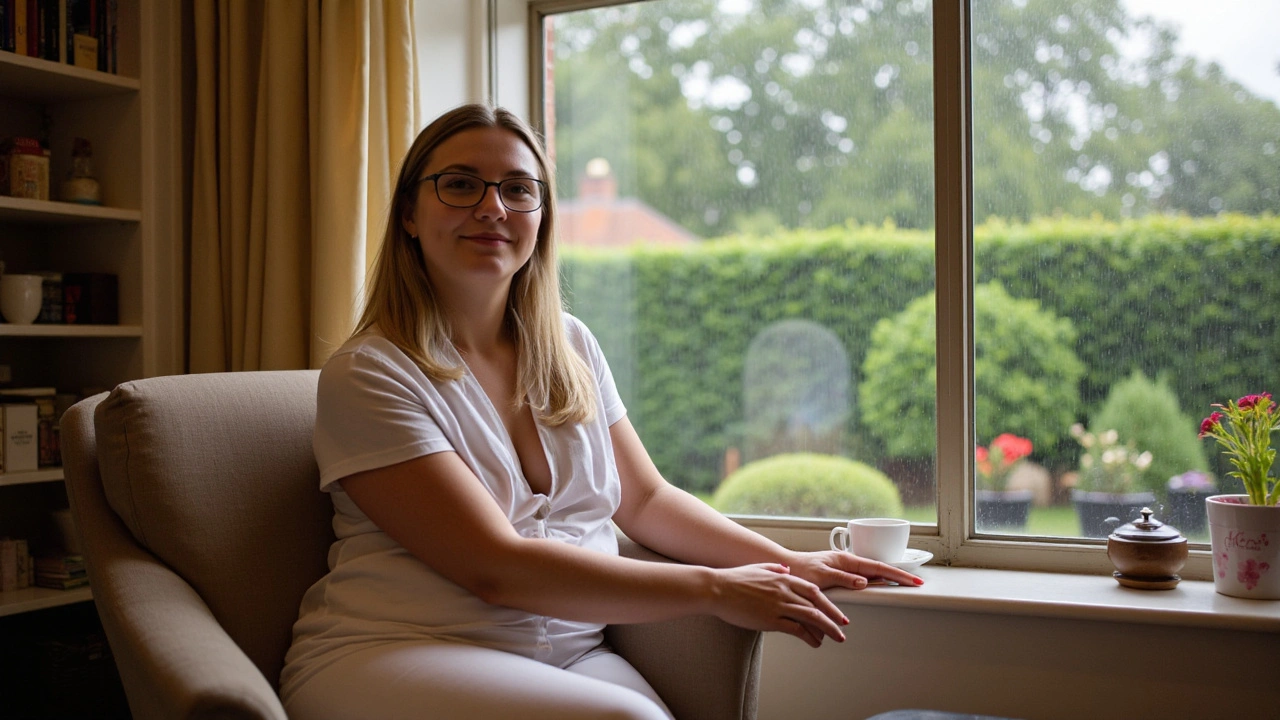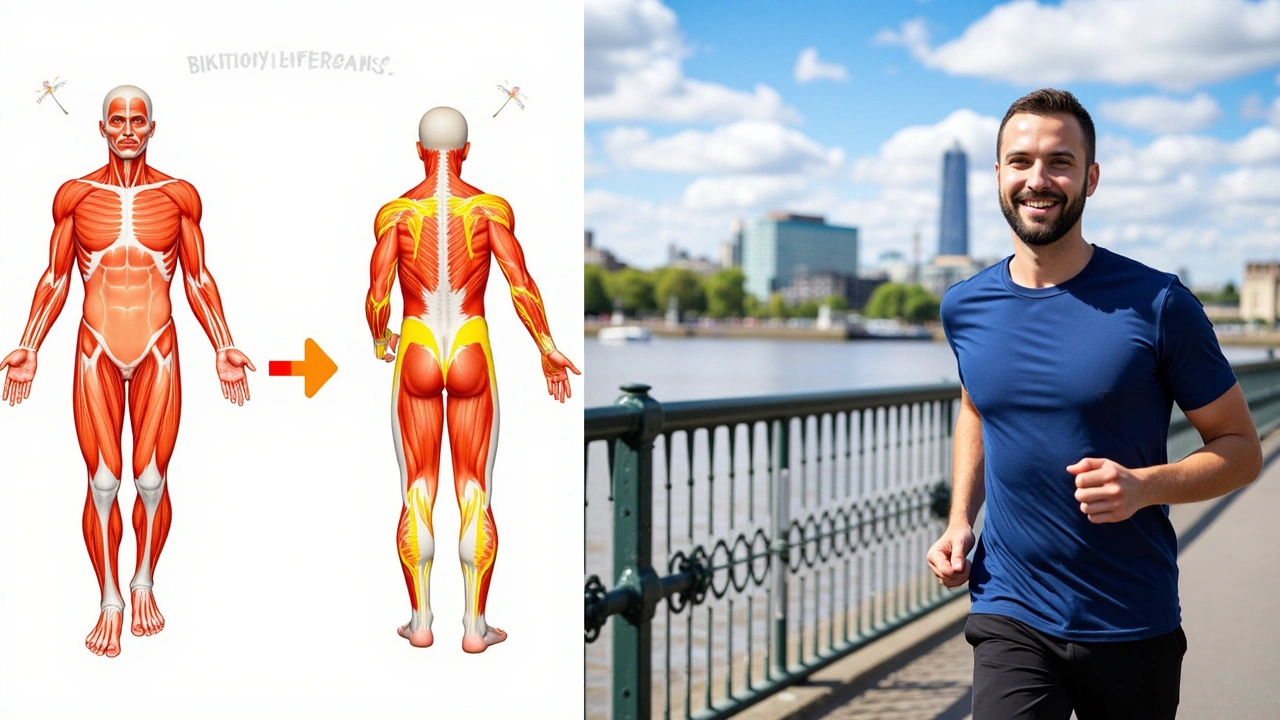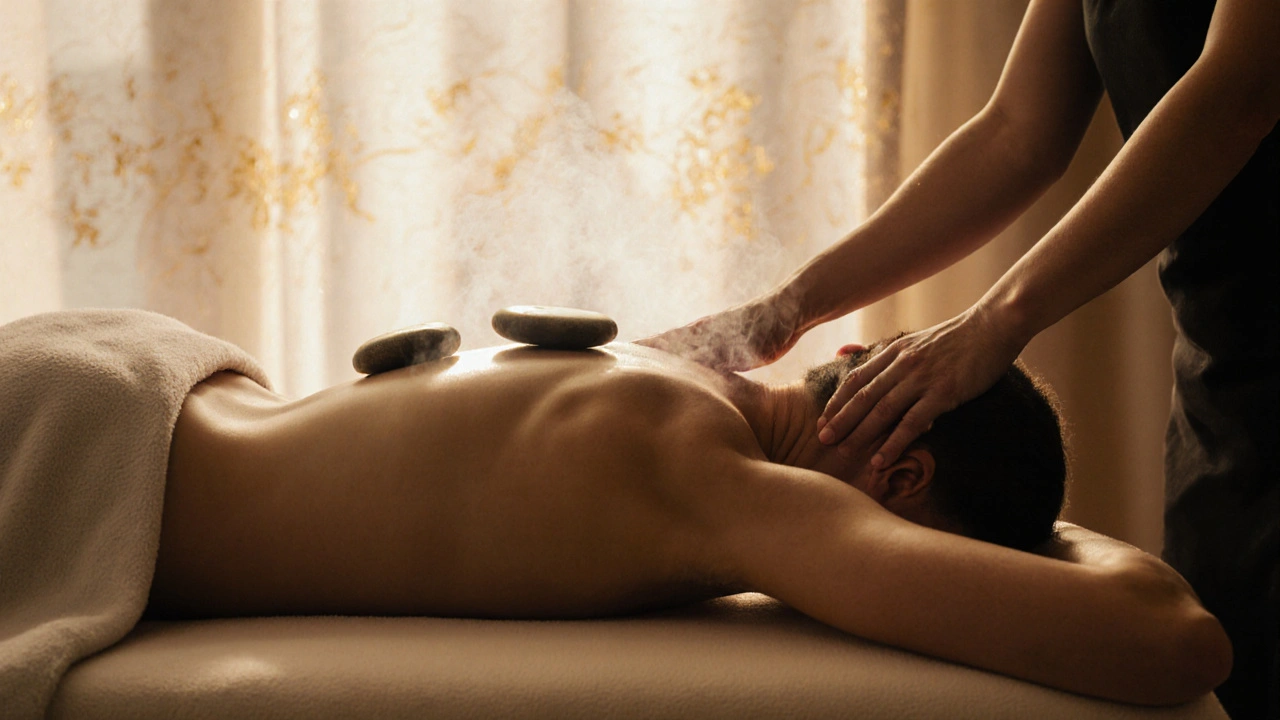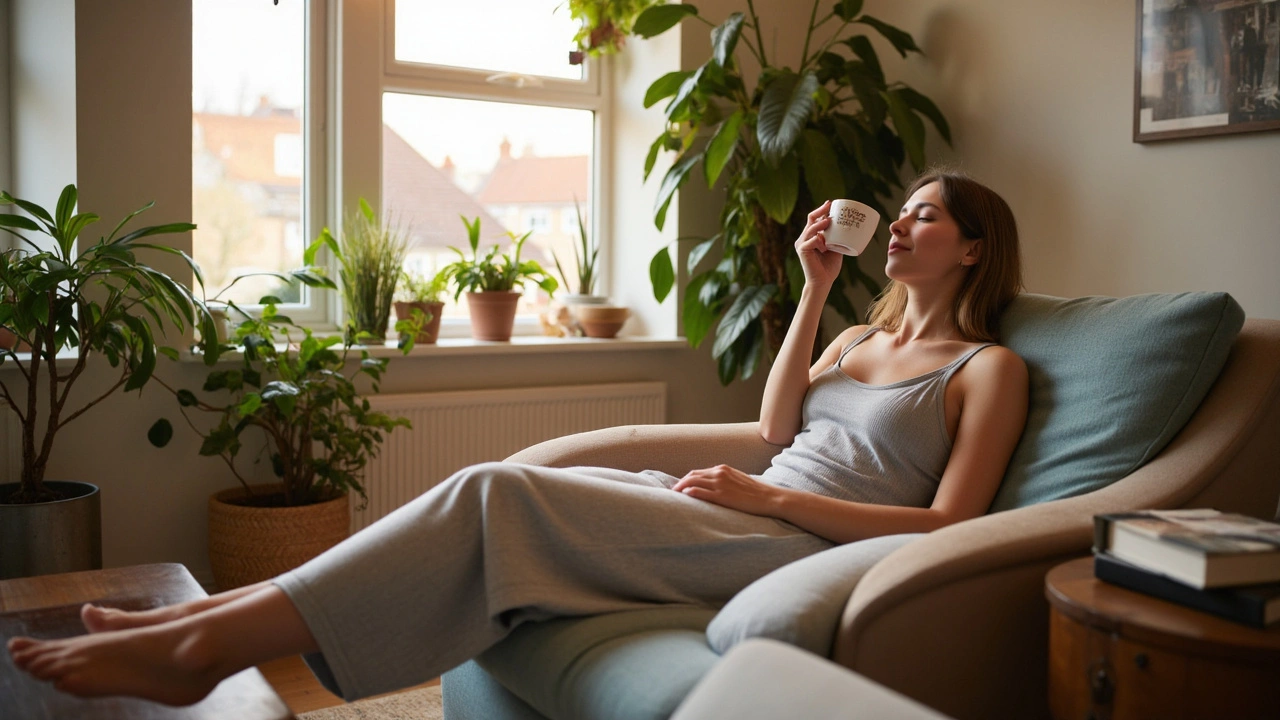Body Massage: Discover Inner Calm Through Touch

Ever wonder why just a few minutes of massage can suddenly make tension melt away? It turns out, your body is wired for this. Skin is packed with nerve endings that respond quickly to touch, sending feel-good signals straight to your brain. You don’t need weekly trips to a fancy spa either—simple massage moves at home can help you shake off stress after a rough day at work or a killer workout.
Here’s the kicker: research actually shows massage lowers the stress hormone cortisol and bumps up those happy chemicals like serotonin and dopamine. That means you’re not just feeling better; your whole body is shifting into chill mode. There’s no need for fancy oils or pro techniques to start—your hands, or even a tennis ball, can do wonders on sore shoulders or stiff legs.
- Why Your Body Craves Massage
- What Really Happens During a Massage
- Surprising Benefits You Didn’t Know
- How to Maximize Every Massage
- Building Your Own Calm Ritual
Why Your Body Craves Massage
Your body isn’t begging for a break just because work is tough or because you sat in traffic for an hour. There’s a real science behind why a body massage feels so essential, especially when stress or muscle pain hits. When you’re touched or your muscles are pressed, your body releases oxytocin, also known as the “love hormone.” This lowers stress and helps you relax almost instantly—kind of like flipping a switch in your nervous system.
Blood flow is a big part of the story. When muscles are worked, circulation shoots up. That means more oxygen gets delivered, and waste products like lactic acid clear out faster. Ever notice how your arms or legs feel warm and tingly after a massage? That’s improved circulation doing its job, which helps muscles recover quicker after exercise or a long day of standing.
Here’s something you might not know—getting regular massages may boost your immune system. Some studies from trusted sources, like the Journal of Alternative and Complementary Medicine, have shown that massage can increase white blood cell count. These cells help fight off disease and infection. So, getting on that massage table is a lot more than relaxation; it could mean fewer sick days too.
Don’t forget about sleep. Massages help promote deeper, better-quality rest, mostly because they trigger your parasympathetic nervous system—the one responsible for relaxation and recovery. People who get massages regularly often report sleeping better and waking up refreshed instead of groggy.
If you’ve ever found yourself feeling less anxious or just more upbeat after a session, that’s not a fluke. Touch helps reduce levels of the stress hormone cortisol and increases those calming brain chemicals, making massage one of the most natural mood lifters around. It’s like giving your mind a mini-vacation, right when you need it most.
What Really Happens During a Massage
So, what’s actually going on when you settle onto that massage table (or even your living room floor)? The basics: your muscles get pressed, pushed, and pulled by hands, elbows, or sometimes even special tools. But it’s not just about working out those annoying knots. Massage sets off a chain reaction in your body that changes the way both your mind and muscles feel.
The main thing is your nervous system. When skin and muscles are pressed in a certain way, pressure sensors send signals up to your brain to slow your heart rate and dial down your stress. Your blood vessels open up a bit (think of them relaxing just like you do), which means more oxygen and nutrients for your tissues. And yes, there’s science to back this: one well-known study found that a 45-minute massage can lower heart rate and blood pressure while boosting immune cell activity by up to 30% the next day.
| Physiological Effect | What It Means For You |
|---|---|
| Lower Cortisol Levels | Less stress, less anxiety |
| Higher Serotonin & Dopamine | More good vibes, better mood |
| Relaxed Blood Vessels | Improved circulation |
| Boosted Immune Cells | Better defense against getting sick |
Massage also helps break the pain cycle. If your body thinks a muscle is injured or tense, it sends pain signals based on old habits. Gentle pressure interrupts this pattern, helping nerves learn that it’s safe to let go. That’s why regular body massage can sometimes help with chronic pain, not just occasional soreness.
Here’s what happens step by step during a typical body massage:
- Muscles get warmed up—think of this like a mini warm-up before a workout.
- The therapist finds any trigger points or tight spots and works them, slowly letting muscles loosen.
- Blood flow increases, so tissues get more oxygen and hydration.
- Your mind starts drifting, thanks to those neurotransmitters kicking in.
Don’t be surprised if you feel sleepy or super thirsty after a session. That’s just your body processing all the new signals and flushing out built-up waste products in the muscles. It’s totally normal and actually a good sign that things are shifting in the right direction.

Surprising Benefits You Didn’t Know
Most people think of massage as just a way to loosen tight muscles, but that's barely scratching the surface. Did you know regular sessions can actually dial down your blood pressure and boost your immune system? A 2023 study from UCLA showed people who got weekly massages had a 30% drop in anxiety scores after just a month.
Even your brain gets a lift from massage. It can help with focus and better sleep because it cranks up those feel-good neurochemicals and helps lower stress hormones. Some doctors even suggest massage for folks with chronic headaches or migraines—half the people in a small 2022 Swedish study said their migraines cut in half after a series of massages.
Here’s a look at a few benefits that might surprise you:
- Body massage can help your body process food better by kicking your digestive system into higher gear.
- It speeds up recovery for muscle injuries and soreness, making it easier to bounce back after hard workouts.
- Feeling cranky or on edge? Massage helps reset your mood by reducing cortisol and increasing serotonin.
- For some people with arthritis, massage loosens up stiff joints and improves mobility.
Check out these quick stats for a snapshot of what massage can do:
| Benefit | Reported Improvement (%) |
|---|---|
| Lowered Anxiety | 30 |
| Better Sleep | 42 |
| Pain Relief | 50 |
| Reduced Headaches | 50 |
| Improved Mood | 45 |
These aren’t miracle cures, but the science keeps stacking up in favor of regular massage—even if it’s something you do at home.
How to Maximize Every Massage
Getting the most from your massage doesn’t just happen by chance. There are some real tricks and habits that can make the experience way more effective—whether you’re on a massage table or just working on your own neck after a long Zoom call.
- Body massage works best when you’re hydrated. Drink a glass of water before and after; this helps your muscles flush out waste released during the session.
- Be clear about your needs. Tell the therapist about sore spots or if you want them to focus on relaxation versus tension. You wouldn’t believe how many people leave unhappy just because they didn’t mention what hurt.
- If you’re doing self-massage, aim for slow, steady pressure—not quick jabs. Studies show moving too fast can actually make your muscles more tense.
- Turn your phone off or put it on silent. Constant buzzing drags your brain out of that relaxed state before you know it.
- Warm up the area first. Even 90 seconds of heat from a shower, or a quick warm towel, makes your muscles more open to massage and reduces discomfort.
After a session, try not to jump straight back into work or the gym. Give yourself at least 10-15 minutes to relax and let your body process the benefits. That simple pause helps your muscles lock in that looser, lighter feeling.
Finally, regular massages—even if they’re just five minutes of self-care—work better over time. Research from the Touch Research Institute found that people who fit massage into their weekly routine saw lasting drops in anxiety and pain, not just a quick fix. Small habit, big payoff.

Building Your Own Calm Ritual
Setting up your own body massage routine isn’t rocket science, but there’s an art to making it stick. Most people give up because they overthink it or expect spa-level results every time. The key? Keep it simple and make it fit your life.
Start by picking a specific time—right after a hot shower, during your favorite show, or even before bed. Consistency is what helps your body and mind expect and enjoy the benefits. Even just 10 minutes a few times a week can make a difference, according to the American Massage Therapy Association: over 65% of regular massage users say it helps manage stress long-term.
Here are easy steps to lock in your ritual:
- Set a recurring reminder on your phone. Don’t wait until you’re burnt out.
- Pick your tools—your hands work, but massage balls or a foam roller can level up your game.
- Choose your spot: quiet corner, bedroom, or anywhere you can actually relax for a few minutes.
- Keep things simple: use some lotion or oil for smoother glides but don’t stress if you don’t have any.
- Focus on body massage for your sorest spots—neck, shoulders, lower back, or feet.
- Close your eyes, take slow breaths, and let your mind chill while you work out those knots.
Some folks like adding music, low lights, or even a scented candle for a little boost. If you’re more numbers-driven, check out how people slot massage into their daily lives:
| Frequency | Reported Stress Relief (%) |
|---|---|
| 1-2x/month | 58 |
| Once/week | 74 |
| 2-3x/week | 81 |
Small choices make a ritual stick. Figure out what works for you and remember: it’s about regular moments of calm, not perfection.



